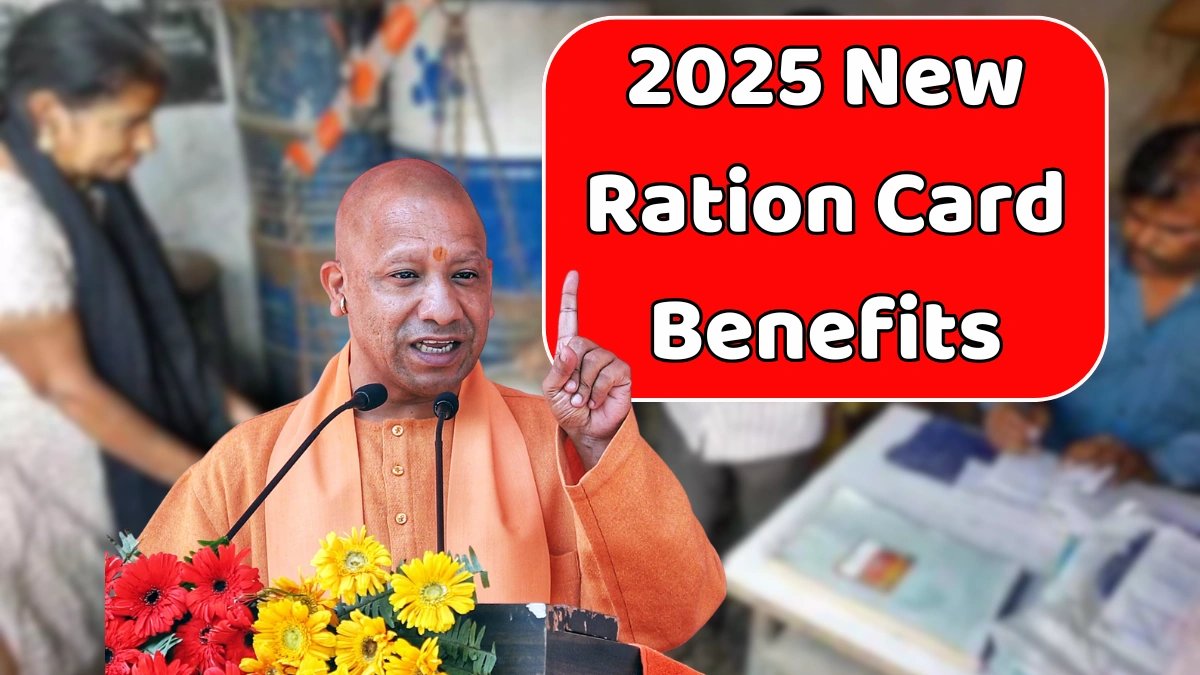In a major welfare move to support middle-class and low-income families, the Government of India has introduced new ration card benefits starting in 2025. Under this updated scheme, every eligible family will receive 2 kg of sugar, 20 kg of wheat, and 30 kg of rice free of cost each month.
The initiative is part of the government’s continued effort to control the impact of rising food prices and ensure that no household goes hungry. This expanded ration card program is expected to benefit millions of families across India, particularly in rural and economically weaker regions.
What’s New in the 2025 Ration Card Scheme
The 2025 update marks a complete overhaul of the Public Distribution System (PDS), ensuring transparency, regular supply, and fair distribution. According to official reports, the new monthly entitlement includes:
- Rice: 30 kg per family – Free of cost
- Wheat: 20 kg per family – Free of cost
- Sugar: 2 kg per family – Free of cost
Additionally, several states are preparing to include edible oil, pulses, and salt at subsidized rates, ensuring families receive balanced nutrition at minimal expense.
Who Can Benefit
The scheme primarily covers:
- BPL (Below Poverty Line) and APL (Above Poverty Line) families holding valid ration cards.
- Households registered under Antyodaya Anna Yojana (AAY) and Priority Household (PHH) categories — they will automatically receive the benefits without reapplying.
Distribution will continue under the Public Distribution System (PDS), monitored by the Food and Civil Supplies Department to ensure transparency.
If your ration card has not been updated for several years, you are advised to link it with your Aadhaar card at the nearest ration office to avoid disruptions in receiving benefits.
How to Apply or Update Your Ration Card
If you don’t yet have a ration card or wish to update an existing one, follow these simple steps:
- Visit your state’s official Food and Civil Supplies website.
- Fill out the online ration card form with accurate family and address details.
- Upload the necessary documents — Aadhaar card, voter ID, income proof, and electricity bill.
- Submit the application online or at the nearest ration office.
- Once verified, you’ll receive an SMS confirmation, and the ration card can be collected or downloaded online.
Most states now allow real-time application tracking, making the process simple, fast, and paperless.
Government’s Vision Behind the Scheme
The 2025 Ration Card update is designed to strengthen India’s food security framework and provide relief from the growing cost of essential commodities. By offering free food grains and sugar, the government aims to reduce the financial burden on poor and middle-class families.
This initiative also supports national efforts to eliminate hunger and malnutrition, ensuring women, children, and senior citizens have consistent access to nutritious food.
It represents a significant step toward building a hunger-free and self-reliant India.
Role of State Governments
While the Central Government supplies the grains under the National Food Security Act (NFSA), the State Governments are responsible for implementing and managing the distribution.
States such as Maharashtra, Uttar Pradesh, Madhya Pradesh, and Bihar have already started upgrading their ration distribution systems with digital monitoring tools to prevent misuse and ensure every beneficiary receives the correct quantity.
Conclusion: The 2025 New Ration Card Benefits bring much-needed relief to millions of families struggling with inflation and food insecurity. By providing 2 kg sugar, 20 kg wheat, and 30 kg rice free every month, the government aims to guarantee nutrition, dignity, and stability for every Indian household.
If you or your family hold a ration card, make sure it is updated and Aadhaar-linked to continue receiving benefits. This scheme is not just an announcement — it’s a commitment to ensure that no family in India goes hungry.
Disclaimer: The details mentioned above are based on publicly available government sources. Applicants are advised to verify the latest updates through official state or central government portals before applying.






